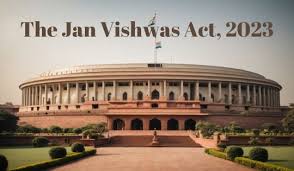Written By: Sarthak Sharma, Intern
Introduction – A Daring Reality
With litigation being considered as the primary way to settle legal disputes, a lot of its complexities are brought to light when people start preferring methods that are more informal, cheaper and offer speedy justice. The Indian Judiciary is plagued and clogged with pending and unsettled cases. In recent years, people’s desire for easier access to justice led to other avenues being discussed. The importance of Alternative Dispute Resolution (ADR) arises from the need to avoid the rusty, cumbersome and inadequate court procedures. With the ever-increasing burden of civil litigation, the judicial system finds it difficult to cope. ADR essentially encompasses a variety of streamlined resolution techniques designed to be more efficient than traditional routes.
In layman terms, ADR refers to the settling of disputes outside of courts. It’s a process that helps parties to resolve disputes without getting into the rigidity of a courtroom trial.
The following laws deal with ADR:
(i) Arbitration and Conciliation Act, 1996
(ii) The Legal Services Authority Act, 1987
Other than the above, Section 89 of the Civil Procedure Code, 1908 provides that if there seems to be evidence of readiness by the parties for an out of court settlement, then the court must formulate the terms of the possible settlement.
Types – A Diverse Range
As mentioned earlier, ADR is a variety of processes that aim to provide quicker relief. The following adaptations of ADR exist:-
Arbitration
In this, a dispute is submitted to an arbitral tribunal where a neutral Arbitrator makes a decision called an award in a private and informal manner. The decision is binding on the parties.
Conciliation
A relatively unstructured dispute resolution method where an impartial third party, the Conciliator, facilitates the parties to reach a settlement agreed upon mutually. If the parties accept the settlement drawn by the conciliator, it becomes a binding result. The parties however can reject suggestions/recommendations of the conciliator.
Mediation
A resolution method where a mediator, an external person neutral to the dispute, helps reach a mutually acceptable decision. The mediator merely facilitates conversation and does not step into the dispute. He exists for a smooth and amicable exchange.
Negotiation
Having no statutory recognition in India, this method is practically self counselling between two pirates where the decision is non-binding and without any third party intervention.
Lok adalat
Lok Adalat or “People’s Court” are informal settings. They’re not too rigid with legal technicalities and negotiations take place in front of a judicial officer. An order of the Lok Adalat is final and binding.
Role of ADR and its Importance and Features
Of course, the role of ADR is unequivocally highlighted by the incapability of the courts due to an increasing burden of pendency of cases, uprise in number of cases, backlog of cases and the nitty gritties of legal formalities. However, ADR methods come with their own salient features to enhance the role they can play in the legal field.
- All types of matters – civil, commercial, industrial, family, inter alia, have a propensity of being resolved by ADR.
- A neutral third person, who may have the expertise in the particular field in question, is generally selected by the parties who help them resolve the dispute.
- While motivated by the best interest of the parties the outsider prevents further conflict.
- It sustains co-operation, social order and reduces hostility.
- It tackles various limitations of litigation by reducing the burden of litigation on courts, ensuring shorter period of dispute resolution, being cost effective, rescuing from technicalities of courts, providing an informal approach to dispute resolution and always keeping reconciliation as its touchstone.
- Various modes of settlement procedures, such as – arbitration, conciliation, mediation, negotiation and Lok Adalat are available under the ambit of ADR.
- The Fundamental Rights are also reflected in ADR, under Article 14 and 21 of the Constitution, which deal with equality before law and right to life and personal liberty respectively.
- ADR also strives to follow the Directive Principle of State Policy and attain equal justice and free legal aid provided under Article 39-A.
- Under ADR parties have far more freedom to express themselves under the confidentiality of it and can reveal the true facts while having flexibility to select what procedural and discovery rules will apply.
The Supreme Court hasn’t shied away from emphasising on the role of ADR in reducing pendency of cases. Even very recently, Justice NV Ramana, while delivering a lecture at an academic event, said that the variety of ADR processes provide millions of people a platform to settle disputes. He further stated that ADR, by allowing a greater degree of control, transforms the parties, from an outsider to the process to an insider of the process, and delivers a participatory model. He accentuated upon the role of Legal Services Authorities, by informing that over 1,32,378 cases were resolved in the years 2019 and 2020, through mediation. He further acclaimed the role of National Lok Adalats as well for disposing off of over 78,41,641 cases in 2019 and 2020.
Conclusion
Since its inception, Alternative Dispute Resolution has come a long way in the Indian Judicial system. Its employment is coming more in the mainstream of settlement of disputes with the legal fraternity standing behind it. The variety of methods it offers offer a suitable method of settlement in a more streamlined manner. Various centres all over the country have opened up for executing ADR’s principles of resolution of disputes. There still exist discrepancies in the system which need to be ironed out. Many great things are expected in the near future for it seems that the ADR, in India, is yet to achieve its full potential.





